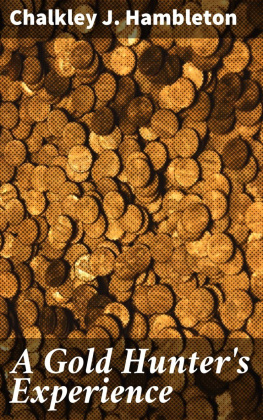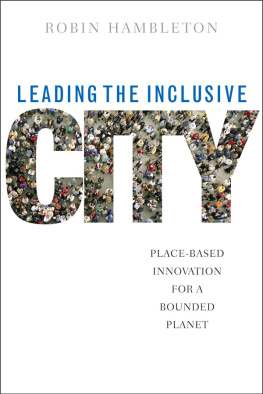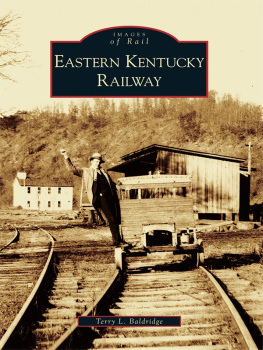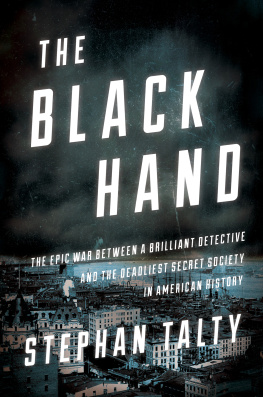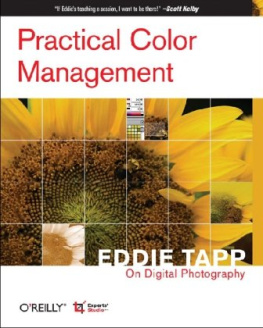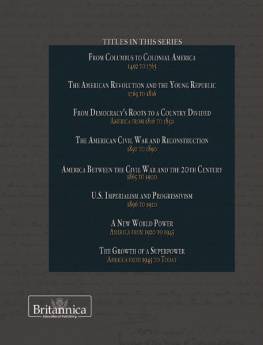KENTUCKY:
DECADES OF DISCORD
1865-1900
KENTUCKY:
DECADES OF DISCORD
1865-1900
Hambleton Tapp
James C. Klotter
ISBN-10: 0-916968-05-7 (cloth)
ISBN-13: 978-0-916968-05-2 (cloth)
ISBN-13: 978-0-916968-36-6 (paper)
Library of Congress Catalog Card Number: 75-30400
Copyright 1977 by The Kentucky Historical Society
All rights reserved
Printed in the United States of America
To Holman Hamilton
CONTENTS
ILLUSTRATIONS
PREFACE
In early 1973, the editorial staff of the Kentucky Historical Society projected a four volume history of Kentucky and reported the proposal to the Executive Committee, which endorsed it. The first of the four volumes, Kentucky: Settlement and Statehood, 1750-1800 by George Morgan Chinn, recently came off the press. This book is the second volume to be published. Two others, covering the 1900-1975 period, and the 1800-1865 era, are in preparation. Two of the purposes of the project are (1) to treat these four periods of Kentucky history in greater depth than has been to date and (2) to compose the material in a manner that will attract the general reading public, as well as historians.
Why was this volume written? The simplest answer is that such a contribution was greatly needed. Little is known about this important period, perhaps because no in-depth history of it has appeared. The general histories of the Commonwealth treat the post-Civil War period rather cursorily. One of the most used histories, Collins two volume work, ends in 1874. Survey histories, including Thomas D. Clarks excellent one, are too limited in space to investigate in depth. The able Zachariah Frederick Smith in his 1895 revised edition devoted but 78 out of 858 pages to the period; Nathaniel Southgate Shalers 1884 work allowed only 16 out of 408 pages; and William E. Connelley and E. Merton Coulters more recent two volume work covers the era in less than 100 of their 1200 pages. Almost every consideration leads to the conclusion that a full treatment of the 1865-1900 period has been long overdue. This volume attempts to fill that historical void.
The authors were under few illusions regarding the complexity of the period. Commercial, political, cultural, sectional, and agricultural rivalries abound throughout. Generalizations remain difficult and dangerous, but must be made.
Kentucky society was one of contradictions; it was in change but unchanging, educated but illiterate, genteel and cultured but violent and crude, urbanized and industrialized but rural and agricultural, complex and diverse but simple and stereotyped. The society produced a James Lane Allen and a Frank Duveneck and at the same time a Devil Anse Hatfield. It gave the nation such leaders as Henry Watterson and John G. Carlisle but also such men as Boss Whallen. It furnished great orators, but also demagogues; dedicated statesmen, but also crass politicians; strong leaders but also weak followers; active reformers, but also repressive reactionaries. The Commonwealth felt the divisive effects of Civil War, the despair of depression, the shame of scandal, and the shock of assassination. At a time when America was being transformed and was leaving behind one way of life, Kentucky often fought that transformation and met change reluctantly. It is that society, that era, that this work examines.
ACKNOWLEDGEMENTS
As usual, space does not permit the authors to thank each person who has given assistance. First and foremost, however, recognition must be given the Kentucky Historical Society Executive Committee, who approved the project, the director, William R. Buster, who supported it at every turn, and the various staff members of the Society, each one who aided in his or her special way. The library staff, composed of Anne McDonnell, Linda Anderson, Rose Lawrence, Doris Nave, and others also deserve special recognition. Dianne Wells assisted in the typing and retyping of the manuscript. Elizabeth Perkins, Nathan Prichard, Martha Blazer and Mary Hamel have aided in the gathering of illustrations. Mary Lou Madigan read and commented on the manuscript, typed much of the final draft, and helped proof the finished project.
In Lexington, the staff of the Margaret I. King Library, University of Kentucky, has given full support. Many of the newspapers used were read in the librarys microfilm area and Mary A. Sullivan and her staff are complimented for the fine collection of newspapers they have assembled. In Special Collections, Jacqueline Bull shared her profound knowledge of the period, pointed out items of interest and suggested applicable manuscript sources. Anyone who has worked with her knows her professionalism, kindness and warmth. Charles Atcher, Charles C. Hay III and virtually the entire Special Collections staff were significantly helpful. James R. Bentley and Nelson L. Dawson of The Filson Club as usual provided meaningful assistance and direction in locating useful materials in their extensive collection. Some items were examined in the Lexington Public Library, the University of Louisville Library, the Louisville Free Public Library, the Kentucky Library at Western Kentucky University, the Eastern Kentucky Library and the Manuscript Division, Library of Congress. All their staffs aided. J. Winston Coleman, Jr., George M. Chinn, Lowell H. Harrison and other historians have supported and encouraged the project almost from its inception. David F. Burg, himself the author of a volume recently published by the University Press of Kentucky, read the entire manuscript and offered suggestions that improved the work. Material was quoted with permission from Francis Butler Simkins and Charles P. Roland, A History of the South, 1972 by Alfred A. Knopf, Inc.
The authors recognize the value of indirect aid as well. Dr. Tapps wife Zerelda, his children and grandchildren, and Dr. Klotters wife Freda, and his children, have, in their own way, contributed significantly toward whatever success this work may achieve.
I
A BACKWARD LOOK
The end of the Civil War found Kentucky in a deplorable condition. During the conflict the state had sustained heavy human and economic losses, and the internecine strife had left violent antipathies. The people were in a mood to hate, retaliate, and destroy. It seemed that a black cloud hung over the dark and bloody ground; there was little joy in the land.
Throughout most of the struggle the Commonwealth had been under military control and guarded by Union troops. Military rule had at times been harsh, oppressive, and highly partisan, contributing to political and social bitterness, as well as to economic disruption.
Enhancing the misery was the dastardly and deadly work of the guerrillasgangs of lawless desperados who preyed most effectively upon the weak and defenseless. This despicable jetsam of the war specialized in depravity. Tools of this depravity were intimidation, whipping, plundering, burning, robbing, raping, and murdering. Guerrilla bands roved over every section of the state throughout most of the war and for several years following.
By the end of the conflict, Kentucky had suffered dangerous depletions of livestock, agricultural supplies, most foodstuffs, and good money was scarce. During the war, Union officials had commandeered supplies at will and in return had given vouchers to loyal citizens who were tardily, if ever, paid. So gross had been the abuses that even loyal Union citizens protested. Furthermore, the slaves, believing freedom near, had become restive and little inclined to work. In fact hundreds had fled from the farms even during the war. Added to such economic and social problems was widespread political confusion.




